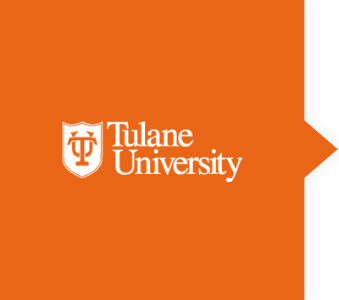
How Safe is That Shrimp? @RISK Weighs Health Risks of Seafood after Deepwater Horizon Spill
Customer
Industry
Product(s)
Application
On April 2010, a large explosion on the Deepwater Horizon (DWH) drilling rig resulted in continuous petroleum and chemical contaminants to flow unchecked into the Gulf of Mexico for nearly three months. By July 15th, roughly 205 million gallons of crude oil had spilled into the ocean, and efforts to decrease the oil lead to applications of approximately 2 million gallons of chemical dispersants. The scale of this disaster led to public concern over consuming potentially spill-contaminated seafood from the Gulf of Mexico. In response, the U.S. Food and Drug Administration (FDA) conducted risk assessments on seafood contaminant levels, in particular, for chemicals called polycyclic aromatic hydrocarbons (PAHs), many of which are carcinogens or suspected carcinogens. They calculated health risks by using the national average of consumer body weight and the 90th percentile of the national distribution for shrimp consumption.
Southeast Louisiana is home to a large population of Vietnamese Americans who rely heavily on the shrimp caught in the Gulf for their livelihood and as a food source, and, as a result, their economic stability was greatly impacted by the Deepwater Horizon spill. They were concerned that the risk assessment conducted by the FDA did not accurately take into account their much higher levels of shrimp consumption and lower-than-national-average body weight. They were also concerned that the FDA did not source specimens from the key areas where they commonly fished for shrimp.
Community Bands Together with University to Organize Risk Analysis Study
Dr. Jeffrey Wickliffe, Associate Professor of Global Environmental Health Sciences at the Tulane University School of Public Health and Tropical Medicine, was asked by a Vietnamese community organization, the Mary Queen of Vietnam Community Development Corporation, to conduct a targeted health risk analysis on the Vietnamese shrimping community and their potential for heightened risk from the Deepwater Horizon spill. “They were particularly concerned because they weren’t really a part of the conversation,” says Dr. Wickliffe. “They tend to be smaller people, and they eat a lot more shrimp than the national average.”
Researchers Gather Detailed Data on Shrimp, Vietnamese Community
To get the necessary data for this evaluation, Dr. Wickliffe and his colleagues conducted detailed phone-based surveys of shrimpers and their families to determine what the group’s body weight and shrimp consumption is. Their survey revealed that the people in this group are notably smaller in body mass, and ate about three times more shrimp on a daily basis than the 90th percentile of the national average used by the FDA. “As a demographic they are at a much higher risk,” says Dr. Wickliffe.
They also collected shrimp from areas where the Vietnamese shrimpers routinely fished, and analyzed them for PAH levels at an independent lab.
@RISK Models the Cancer and Overall Health Risks Posed to Vietnamese Shrimping Community
Dr. Wickliffe and his colleagues then used @RISK to analyze the various data they had collected. “In terms of human health risk, assessments are becoming more and more probabilistic,” he says. Inputs for their modeled distributions were: concentrations of PAHs in shrimp that was collected; daily shrimp intake rates of Vietnamese community members surveyed; assumed durations of exposure that people had to PAHs; individual’s self-reported body weights; and averaging times (the time used to average out the dose of PAHs). The model for these inputs was simulated 10,000 times, and a sensitivity analysis was conducted to determine the most influential parameters. The analysis revealed that the concentration of chemicals and the daily shrimp intake rate were the most influential in determining risk levels, however, “The study showed that the shrimp were really low in PAHs overall,” says Dr. Wickliffe. “In fact, the testing did not actually detect any of the known carcinogens.”
Nonetheless, to be extremely conservative in their analysis, Dr. Wickliffe and his team modeled health risks using three approaches. In the first approach, they assumed the carcinogenic PAHs that were not detected were actually present in the shrimp at almost undetectable amounts. Under this assumption, the health risks did not exceed those considered unacceptable by the research team, using FDA and EPA standards as guidelines. In the second approach, they again assumed the carcinogenic PAHs were present at almost undetectable amounts, but also included all detected suspected or non-carcinogenic PAHs, assuming all of these to also be carcinogenic. Again, these risks did not exceed those considered unacceptable by the research team. In the third approach, Wickliffe and his colleagues further assumed that all detected PAHs, including those for which no cancer data yet exists (this includes the crude oil specific PAHs that have not been studied for carcinogenicity), were now carcinogenic, and included those in their model. It was only under this extra-conservative approach that excessive health risks (> 1 in 10,000 at the 99th percentile) were seen, and even then, they appeared only in the extreme upper tail of the modeled risk distribution.
Summary
The Deepwater Horizon oil spill of 2010 prompted widespread concern regarding the risk in consuming seafood from the areas affected by the spill. Researchers from Tulane University in New Orleans used @RISK to conduct a targeted health risk assessment based on the consumption of locally harvested shrimp among communities of Vietnamese-Americans in southeast Louisiana, who typically consume greater amounts of shrimp than the national average. By determining this demographic’s body mass and daily shrimp intake, as well as the chemical levels present in the shrimp that they consumed, the @RISK model showed that there was no unacceptable acute health or cancer risks associated with heavy shrimp consumption.
Probabilistic Risk Analysis in Public Health and Environmental Health Sciences
While these results are reassuring in terms of the overall health risk posed to the Vietnamese American shrimping community, Wickliffe’s team cautions that this approach is not currently tenable for policy-based chemical risk assessment because of the dearth of knowledge regarding the toxicology of these modeled compounds.
Aside from using @RISK for all his environmental health research, Dr. Wickliffe also uses the software in the courses he teaches, and likes that students can easily grasp how to use the tool. “It’s an Excel add-in, and students usually already know how to use Microsoft Excel, so it’s not a very steep learning curve,” he says. “Probabilistic analysis is where the regulatory agencies are going with risk assessments, so for students who are getting a degree in public health and environmental health sciences, this is the kind of training they need—they need to know how to conduct this kind of risk assessment.”

@RISK graphs showing simulations of cancer risk based on Wickliffe’s three conservative tests of known, suspected, and non-carcinogenic PAHs.

